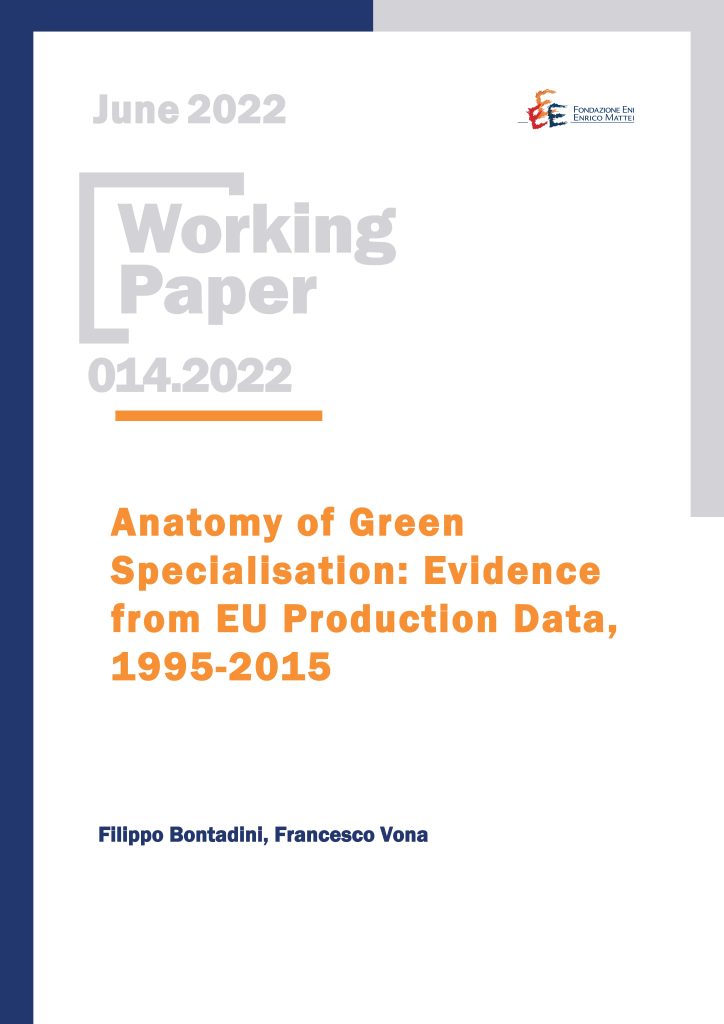Anatomy of Green Specialisation: Evidence from EU Production Data, 1995-2015

17.06.2022
Filippo Bontadini (OFCE Sciences-Po, LUISS Guido Carli University and SPRU – University of Sussex); Francesco Vona (University of Milan, Department of Environmental Science and Policy, Fondazione Eni Enrico Mattei (FEEM) and OFCE Sciences-Po)
Q55, L60, O44
Green goods, green specialisation, environmental policies, complementarity, path dependency
We study green specialisation across EU countries and detailed 4-digit industrial sectors over the period of 1995-2015 by harmonizing product-level data (PRODCOM). We propose a new list of green goods that refines lists proposed by international organizations by excluding goods with double usage. Our analysis reveals important structural characteristics of green specialisation in the manufacturing sector. First, green production is highly concentrated, with 13 out of 119 4-digit industries, which are high-tech and account for nearly 95% of the total. Second, green and polluting productions do not occur in the same sectors, and countries specialise in either green or brown sectors. Third, our econometric analysis identifies three key drivers of green specialisation: (i) first-mover advantage and high persistence of green specialisation, (ii) complementarity with non-green capabilities and (iii) the degree of diversification of green capabilities. Importantly, once we control for these drivers, environmental policies are not anymore positively associated with green specialisation.
***
Suggested citation: F. Bontadini, F. Vona (2022), ‘Anatomy of Green Specialisation: Evidence from EU Production Data, 1995-2015’, Nota di Lavoro 014.2022, Milano, Italy: Fondazione Eni Enrico Mattei
